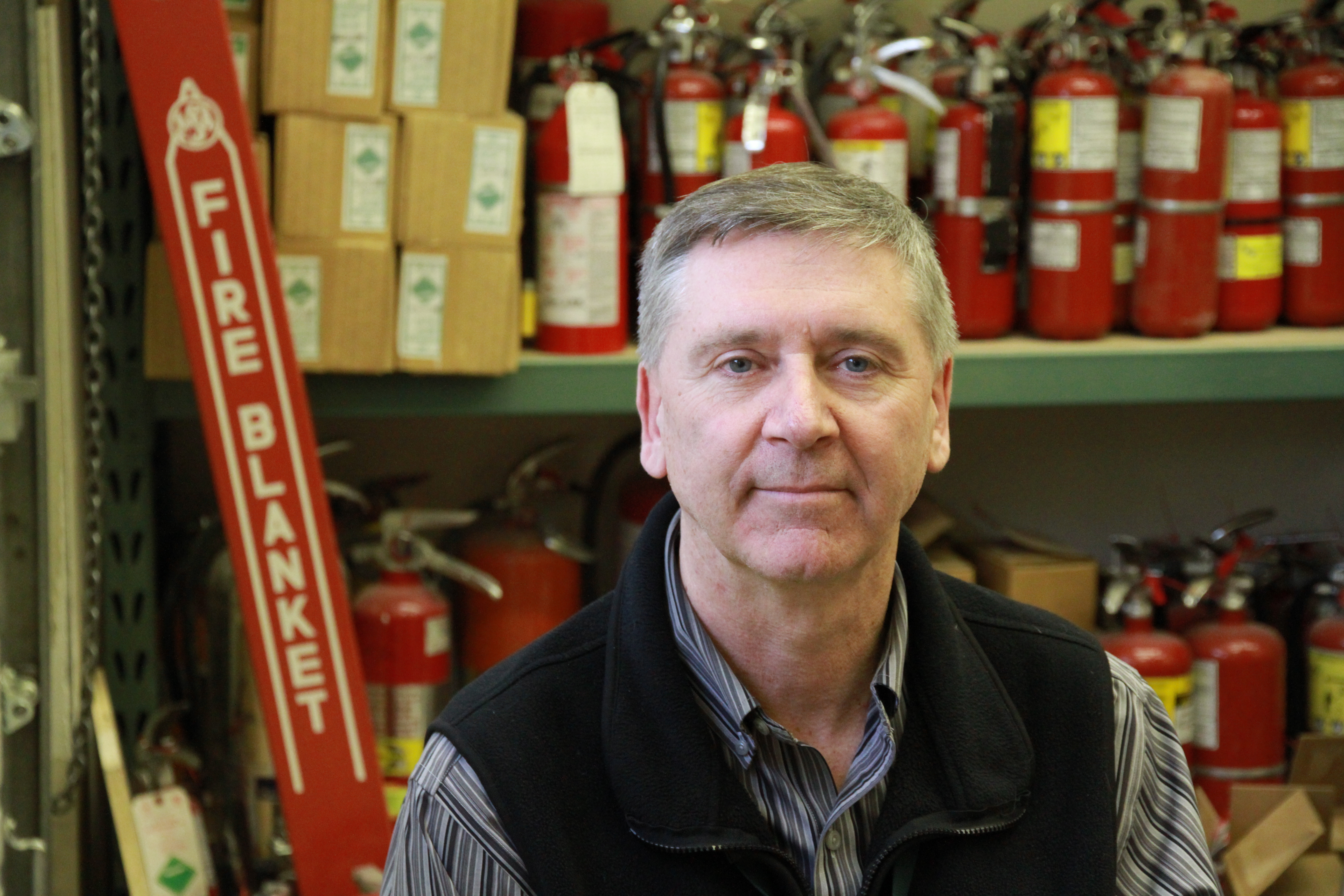Where there’s smoke ... a fire safety primer
It is late in the afternoon. You are on the fifth floor in the Agriculture Building. Smoke is billowing from one of the labs. You think, where there’s smoke, there’s fire.
By Kris Foster Choose your own adventure. Do you:
Choose your own adventure. Do you:
A) scream "FIRE! FIRE!" at the top of your lungs, while running back to your office to collect your valuables? You push numerous colleagues out of the way as you clear a path to the elevator so that you can get to the exit on the main floor; or
B) check the lab for fire, and when you discover a fire proceed to pull the fire alarm and then discharge a fire extinguisher to put out what appears to be, at this point, a manageable fire? You ensure your personal safety and always maintain a clear path to an exit.
If you chose A, Larry Riopka, fire and contractor safety manager in Workplace Safety and Environmental Protection (WSEP), encourages you to register for a fire safety workshop. If you chose B, then you chose the right adventure, said Riopka.
This is what Steve Siciliano, Min Li and Bing Si in the Department of Soil Sciences did on Oct. 5 when they saw smoke and flames coming from one of the college's drying ovens. They pulled an alarm and grabbed a fire extinguisher. "They handled the situation correctly and damage was minimal," Riopka said.
"Pulling the alarm and getting out safely are the most important things to do. The fire department gets here in four minutes or less and they're trained and have the proper equipment to deal with fires. Each alarm is also responded to by WSEP, Campus Safety and Facilities Management Division."
Fire is fast and unpredictable, he continued. "Activating the alarm is important. Each building has its own system and pull alarms are located by each exit. You also have to make sure you know the best points to leave the building."
If the fire is small, locate one of the 3,800 fire extinguishers on campus to put the fire out, Riopka said. "But personal safety is number one, so if you don't feel comfortable with a fire extinguisher, pull the alarm and leave. Most of us on campus are not trained fire fighters. Try to shut as many doors as possible on your way out to slow the spread of the fire."
If an alarm in a building sounds for longer than 10 seconds, evacuate the building, he continued. "We test alarms on the first Monday of every month, and when it rings for less than 10 seconds, it's maintenance. If it goes off for more than 10 seconds, it isn't a test, so evacuate the building as though there is a fire."
There are about 25 to 30 fires on campus and more than 100 fire-related calls each year, he said. "I only count fires as those that generate smoke, not false alarms. The majority of the fires we respond to are cooking fires in residences, unattended food that creates lots of smoke."
Most people, Riopka said, react properly when confronted by fire. "I always stress that if something doesn't feel right or look right, call us to come check it out. We are a campus resource, that's why we're here."
To report a fire call Campus Safety at 966-5555.

